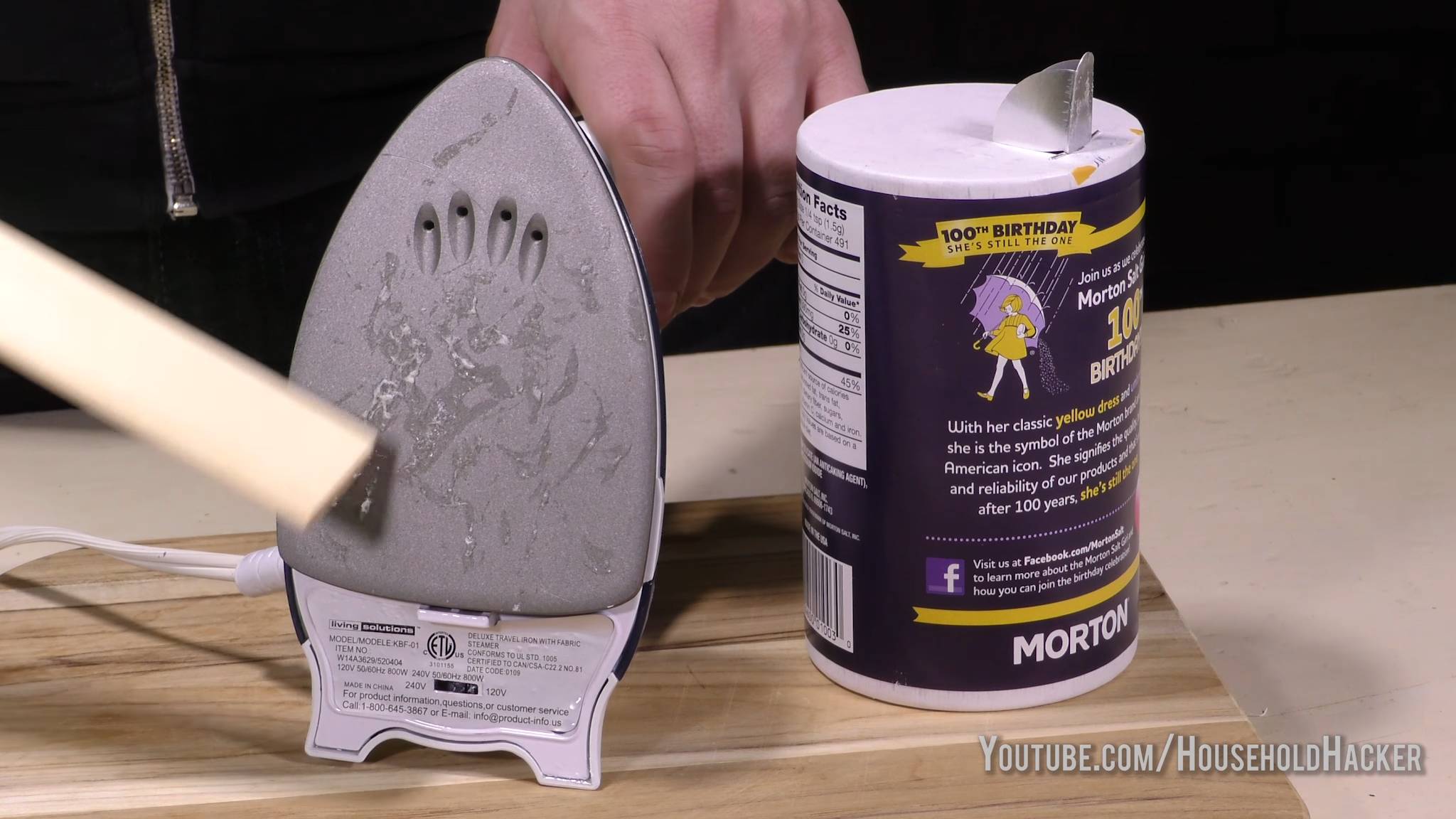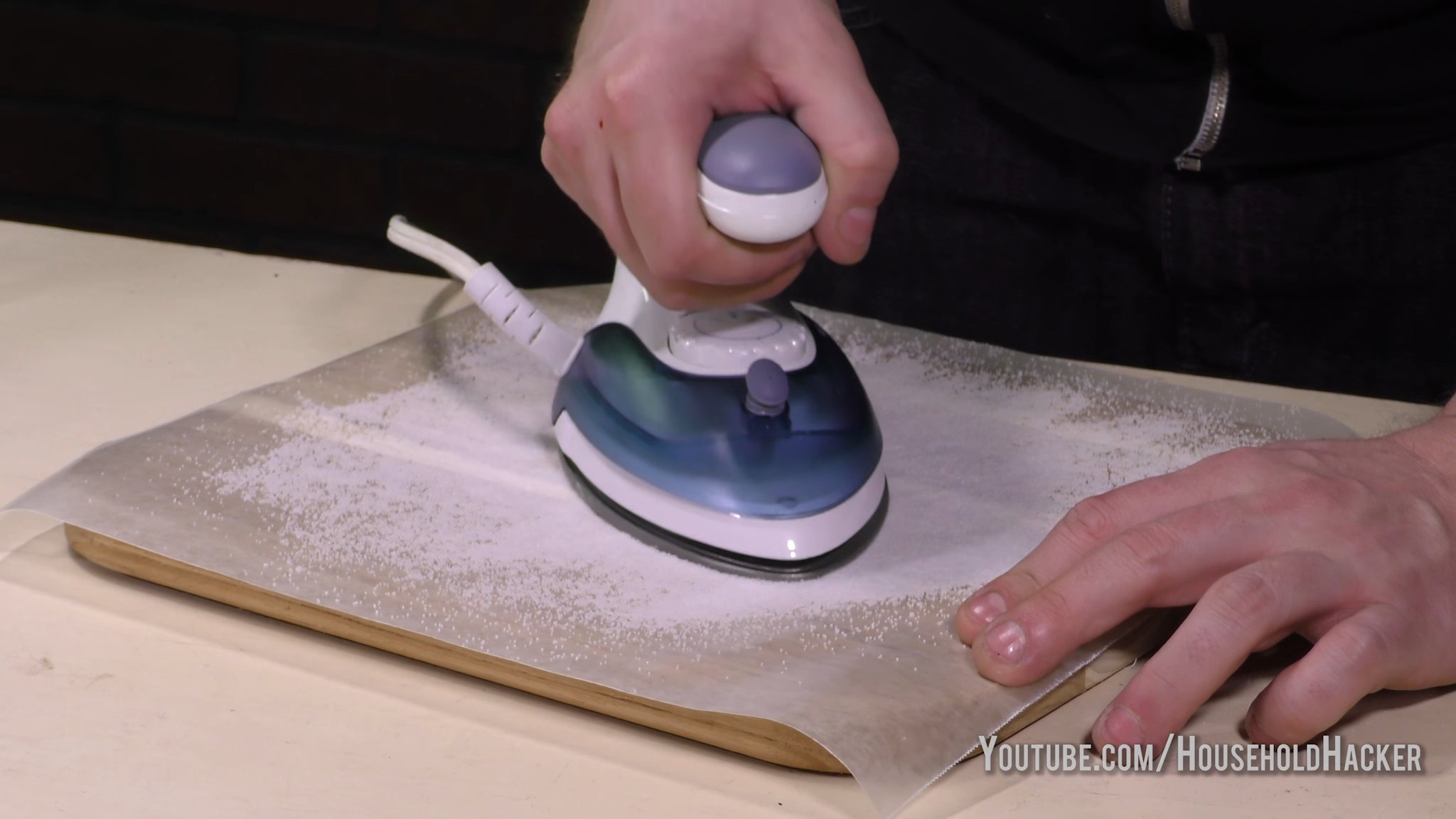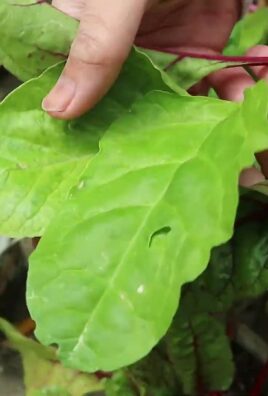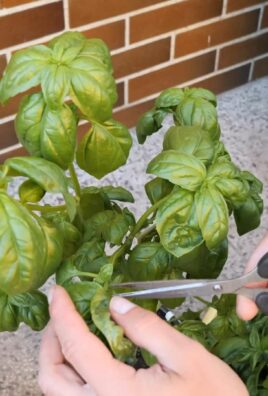Grow Microgreens at Home: Imagine adding a burst of fresh, vibrant flavor and a nutritional powerhouse to your meals, all from the comfort of your own kitchen! Forget those sad, wilted greens from the grocery store. This isn’t just about gardening; it’s about unlocking a world of culinary possibilities and boosting your well-being with minimal effort.
Microgreens, tiny seedlings of edible plants, have been enjoyed for centuries, with roots tracing back to ancient civilizations who valued their concentrated nutrients and unique flavors. While their popularity has surged in recent years, the concept of nurturing young plants for their intense flavor is far from new.
Why should you learn to grow microgreens at home? Well, for starters, it’s incredibly easy and rewarding! You don’t need a sprawling garden or even a green thumb. Plus, in today’s world, where access to fresh, healthy produce can sometimes be a challenge, having a readily available source of vitamins and minerals right on your windowsill is a game-changer. I’m going to show you how to cultivate these little wonders, adding a vibrant touch to your salads, sandwiches, and even smoothies. Get ready to embark on a journey of flavor, freshness, and fun!

Grow Your Own Microgreens: A Beginner’s Guide
Hey there, fellow plant enthusiast! Ever wanted to add a burst of fresh flavor and nutrients to your meals without a trip to the grocery store? Well, you’re in the right place! I’m going to walk you through the super simple process of growing your own microgreens at home. Trust me, it’s easier than you think, and the rewards are delicious!
What are Microgreens Anyway?
Microgreens are basically baby versions of vegetables and herbs, harvested just after the cotyledon leaves (the first leaves that emerge from the seed) have developed. They’re packed with flavor and nutrients, often more so than their mature counterparts. Plus, they’re incredibly versatile – you can toss them in salads, sprinkle them on sandwiches, blend them into smoothies, or use them as a garnish for just about anything.
Why Grow Your Own?
Besides the obvious convenience of having fresh greens at your fingertips, growing your own microgreens is:
* Cost-effective: A packet of seeds is way cheaper than buying pre-grown microgreens.
* Environmentally friendly: No plastic clamshells or long-distance transportation involved!
* Fun and rewarding: There’s something incredibly satisfying about watching your tiny seeds sprout and grow into vibrant greens.
* Customizable: You get to choose exactly what you want to grow, experimenting with different flavors and textures.
* Freshness Guaranteed: You can harvest them right before you eat them, ensuring maximum flavor and nutrient content.
Getting Started: What You’ll Need
Before we dive into the step-by-step instructions, let’s gather our supplies. Don’t worry, you probably already have some of these lying around!
* Seeds: This is the most important part! Choose high-quality seeds specifically intended for microgreens. Some popular options include:
* Broccoli
* Radish
* Sunflower
* Pea shoots
* Arugula
* Kale
* Mustard
* Cress
* Beet
I recommend starting with a few different varieties to see what you like best. Make sure the seeds are untreated and not intended for planting in the garden with pesticides.
* Growing Trays: You’ll need two trays: one with drainage holes and one without. The tray with drainage holes will hold your growing medium and seeds, while the tray without holes will act as a water reservoir. You can find these at most garden centers or online. You can also repurpose plastic containers, just make sure they’re clean and food-safe.
* Growing Medium: You have a few options here:
* Seed starting mix: This is a lightweight, sterile mix specifically designed for starting seeds.
* Coco coir: This is a sustainable alternative to peat moss, made from coconut husks.
* Hemp mats: These are biodegradable mats made from hemp fibers.
I personally prefer seed starting mix because it’s readily available and easy to use.
* Spray Bottle: You’ll need this to keep your seeds and seedlings moist.
* Weight (Optional): A small weight, like a book or a brick wrapped in plastic, can help ensure even germination.
* Light Source: While microgreens can grow indoors, they need plenty of light. A sunny windowsill might work, but a grow light will give you the best results.
* Scissors or Kitchen Shears: For harvesting your microgreens.
Step-by-Step Guide to Growing Microgreens
Okay, let’s get our hands dirty! Here’s a detailed breakdown of the process:
1. Preparing Your Trays
1. Clean Your Trays: Start by thoroughly cleaning both of your trays with soap and water. This will help prevent mold and bacteria growth.
2. Add Growing Medium: Fill the tray with drainage holes with your chosen growing medium. Moisten the medium thoroughly with water, making sure it’s evenly damp but not soggy. You should be able to squeeze a handful of the medium and only get a few drops of water out.
3. Level the Surface: Gently level the surface of the growing medium with your hand or a small trowel. This will ensure even germination.
2. Sowing Your Seeds
1. Seed Density: This is where things can get a little tricky. The ideal seed density depends on the type of microgreen you’re growing. Generally, smaller seeds like broccoli and radish can be sown more densely than larger seeds like sunflower and pea shoots.
2. Sowing Technique: Sprinkle the seeds evenly over the surface of the growing medium. You want a good covering, but avoid overcrowding. If the seeds are too close together, they can compete for resources and become leggy.
3. Gently Press Seeds: After sowing, gently press the seeds into the growing medium with your hand or a small piece of cardboard. This will help them make good contact with the moisture.
4. Mist with Water: Use your spray bottle to mist the seeds with water. You want to keep them moist, but avoid overwatering.
3. Germination Phase
1. Cover and Weigh (Optional): Cover the tray with a lid or another tray to create a dark, humid environment. This will encourage germination. You can also place a small weight on top of the lid to ensure even contact between the seeds and the growing medium.
2. Darkness is Key: Place the tray in a dark, warm location. A closet or cupboard works well.
3. Check Daily: Check the tray daily to make sure the growing medium is still moist. Mist with water as needed.
4. Germination Time: Germination time varies depending on the type of seed. Some seeds, like radish, will germinate in as little as 24 hours, while others, like sunflower, may take a few days.
4. Growing Phase
1. Introduce Light: Once the seeds have germinated and you see tiny sprouts emerging, it’s time to introduce light. Remove the lid and place the tray under a grow light or in a sunny windowsill.
2. Bottom Watering: This is where the second tray comes in. Fill the tray without drainage holes with about an inch of water. Place the tray with the microgreens inside the water-filled tray. The growing medium will absorb water from the bottom, keeping the microgreens consistently moist without overwatering.
3. Rotate Regularly: If you’re using a windowsill, rotate the tray regularly to ensure even light exposure. This will prevent the microgreens from leaning towards the light source.
4. Monitor Moisture: Continue to monitor the moisture level of the growing medium. Add water to the bottom tray as needed.
5. Air Circulation: Ensure good air circulation around the microgreens to prevent mold and mildew. You can use a small fan to gently circulate the air.
5. Harvesting Your Microgreens
1. Harvest Time: Your microgreens are ready to harvest when they have developed their cotyledon leaves and the first set of true leaves (the leaves that look like miniature versions of the mature plant) are starting to emerge. This usually takes about 7-14 days, depending on the type of microgreen.
2. Harvesting Technique: Use scissors or kitchen shears to cut the microgreens just above the growing medium.
3. Wash and Dry: Gently wash the harvested microgreens in cool water and dry them thoroughly with a salad spinner or paper towels.
4. Storage: Store your harvested microgreens in an airtight container in the refrigerator. They should last for about a week.
Troubleshooting Tips
Even with the best intentions, things can sometimes go wrong. Here are a few common problems and how to fix them:
* Mold: Mold is a common problem, especially in humid environments. To prevent mold, ensure good air circulation, avoid overwatering, and use a sterile growing medium. If you see mold, remove the affected areas immediately.
* Leggy Microgreens: Leggy microgreens are tall and spindly, with long stems and small leaves. This is usually caused by insufficient light. Make sure your microgreens are getting enough light, either from a grow light or a sunny windowsill.
* Uneven Germination: Uneven germination can be caused by uneven moisture or temperature. Make sure the growing medium is evenly moist and that the tray is in a warm location.
* Slow Growth: Slow growth can be caused by a variety of factors, including insufficient light, low temperatures, or poor-quality seeds. Make sure your microgreens are getting enough light and that the temperature is warm enough. If you’re using old seeds, they may not germinate as well.
Experiment and Have Fun!
The best part about growing microgreens is experimenting with different varieties and finding what you like best. Don’t be afraid to try new things and see what works for you. And most importantly, have fun!

Conclusion
So, there you have it! Growing microgreens at home is not only surprisingly simple and cost-effective, but it’s also a fantastic way to inject a burst of fresh flavor and vital nutrients into your daily meals. Forget those expensive, pre-packaged containers from the grocery store – with just a few readily available supplies and a little bit of patience, you can cultivate your own thriving microgreen garden right on your windowsill.
This DIY trick is a must-try for several compelling reasons. First and foremost, the freshness factor is unparalleled. Imagine snipping vibrant, flavorful microgreens just moments before adding them to your salad, sandwich, or smoothie. The taste difference compared to store-bought greens is truly remarkable. Secondly, you have complete control over the growing process. You can choose organic seeds, avoid harmful pesticides, and tailor the growing conditions to your specific preferences. This ensures that you’re consuming the healthiest and most nutritious microgreens possible.
Furthermore, growing microgreens at home is an incredibly rewarding experience. Watching those tiny seeds sprout and transform into a lush, edible crop is a source of immense satisfaction. It’s a fantastic way to connect with nature, even in the heart of the city. And let’s not forget the cost savings! Over time, growing your own microgreens will significantly reduce your grocery bill, especially if you regularly purchase them.
Ready to take your microgreen game to the next level? Consider experimenting with different seed varieties. Radish microgreens offer a peppery kick, while broccoli microgreens are packed with antioxidants. Sunflower microgreens have a nutty flavor and a satisfying crunch. You can even create your own custom blends to suit your taste preferences. Another variation to explore is using different growing mediums. While soil is a popular choice, you can also try coco coir, hemp mats, or even paper towels. Each medium offers its own unique benefits and challenges.
Don’t be afraid to get creative and personalize your microgreen growing setup. Use recycled containers, decorate your growing trays, or even build a small vertical garden. The possibilities are endless!
We are confident that you’ll find growing microgreens at home to be a fun, easy, and incredibly rewarding experience. So, gather your supplies, plant your seeds, and get ready to enjoy a bounty of fresh, flavorful microgreens. We encourage you to try this DIY trick and share your experiences with us! Let us know what varieties you’ve grown, what growing methods you’ve used, and what delicious dishes you’ve created. Share your photos and tips on social media using #HomegrownMicrogreens – we can’t wait to see what you come up with! Happy growing!
Frequently Asked Questions (FAQ)
What exactly are microgreens?
Microgreens are young vegetable greens that are typically harvested 7-14 days after germination, when the first true leaves have emerged. They are larger than sprouts but smaller than baby greens. Microgreens are packed with nutrients and offer intense flavors, making them a popular addition to salads, sandwiches, soups, and other dishes. They are essentially baby versions of mature vegetables and herbs, offering a concentrated dose of vitamins, minerals, and antioxidants.
What kind of seeds can I use to grow microgreens?
The possibilities are vast! Some popular choices include radish, broccoli, kale, arugula, sunflower, pea shoots, cilantro, basil, and mustard. However, it’s crucial to use seeds specifically intended for sprouting or microgreen production. Avoid using seeds that have been treated with fungicides or other chemicals, as these can be harmful to your health. Look for seeds labeled as “organic” or “untreated” to ensure that you’re growing the safest and healthiest microgreens possible. Experiment with different varieties to discover your favorite flavors and textures.
What kind of container should I use?
You can use a variety of containers to grow microgreens, as long as they are clean and have drainage holes. Shallow trays, plastic containers, and even recycled takeout containers can work well. You can also purchase specialized microgreen growing trays online or at garden centers. The ideal container should be shallow (around 2-3 inches deep) and have a lid or cover to help retain moisture during the germination process. Make sure the container is made of food-grade plastic if you are using plastic containers.
What kind of soil should I use?
A good quality potting mix is ideal for growing microgreens. Look for a mix that is well-draining and contains a blend of peat moss, perlite, and vermiculite. You can also use coco coir, which is a sustainable alternative to peat moss. Avoid using garden soil, as it can be too heavy and may contain pests or diseases. Ensure the soil is moist but not waterlogged before planting your seeds.
How much light do microgreens need?
Microgreens need plenty of light to thrive. A sunny windowsill that receives at least 4-6 hours of direct sunlight per day is ideal. If you don’t have access to a sunny windowsill, you can use grow lights. LED grow lights are a great option, as they are energy-efficient and provide the right spectrum of light for plant growth. Position the grow lights a few inches above the microgreens and keep them on for 12-16 hours per day.
How often should I water my microgreens?
Microgreens need to be kept consistently moist, but not waterlogged. Water them gently using a spray bottle or watering can with a fine rose. Water when the soil surface feels dry to the touch. Avoid overwatering, as this can lead to mold or fungal growth. Bottom watering is also an effective method. Simply place the growing tray in a shallow dish of water and allow the soil to absorb the water from the bottom.
How long does it take for microgreens to grow?
The growing time for microgreens varies depending on the variety. Some varieties, such as radish and mustard, can be ready to harvest in as little as 7 days. Others, such as sunflower and pea shoots, may take up to 14 days. The best way to determine when your microgreens are ready to harvest is to observe their growth. They are typically ready when the first true leaves have emerged and the stems are about 1-2 inches tall.
How do I harvest microgreens?
Harvest microgreens by snipping them off at the base of the stem using scissors or a sharp knife. Harvest them just before you plan to use them for the best flavor and freshness. Avoid washing the microgreens until just before you’re ready to eat them, as washing them too early can cause them to wilt.
How do I store microgreens?
Store harvested microgreens in the refrigerator in a sealed container lined with a paper towel. The paper towel will help absorb excess moisture and keep the microgreens fresh for longer. Microgreens typically last for up to a week in the refrigerator.
Can I reuse the soil after harvesting microgreens?
It’s generally not recommended to reuse the soil after harvesting microgreens, as it may contain fungal spores or other contaminants. It’s best to start with fresh soil each time you plant a new batch of microgreens. You can compost the used soil to enrich your garden soil.
What if my microgreens get moldy?
Mold can sometimes be a problem when growing microgreens, especially in humid environments. To prevent mold, ensure that your microgreens have good air circulation and avoid overwatering. If you notice mold, remove the affected areas immediately. You can also try spraying the microgreens with a diluted solution of hydrogen peroxide and water. If the mold is widespread, it’s best to discard the entire batch and start over.
Are there any microgreens I should avoid growing?
Yes, some plants in the nightshade family (like tomatoes, peppers, eggplants, and potatoes) should not be grown as microgreens because their leaves can contain toxic alkaloids. Also, avoid growing rhubarb leaves as microgreens, as they are poisonous. Always research the specific plant before growing it as a microgreen to ensure that it is safe to consume.




Leave a Comment